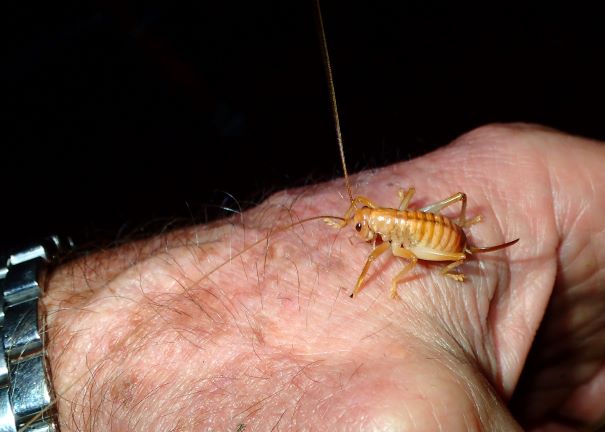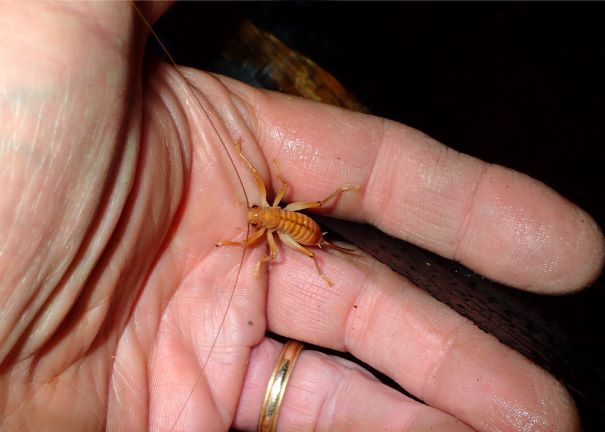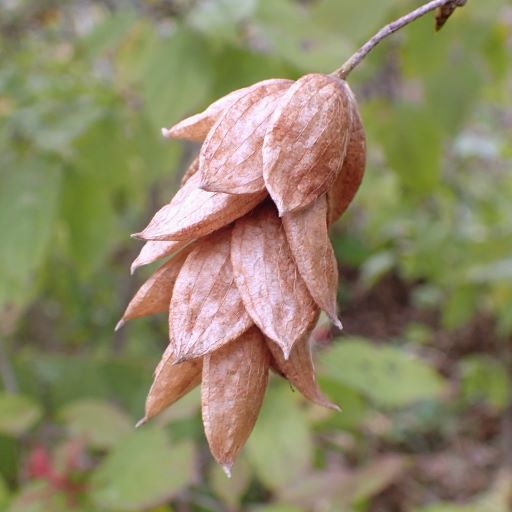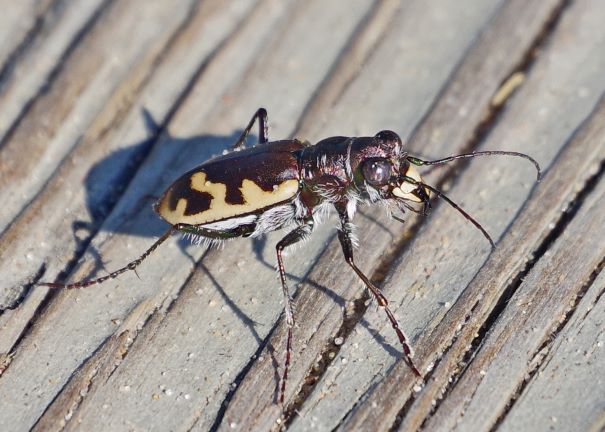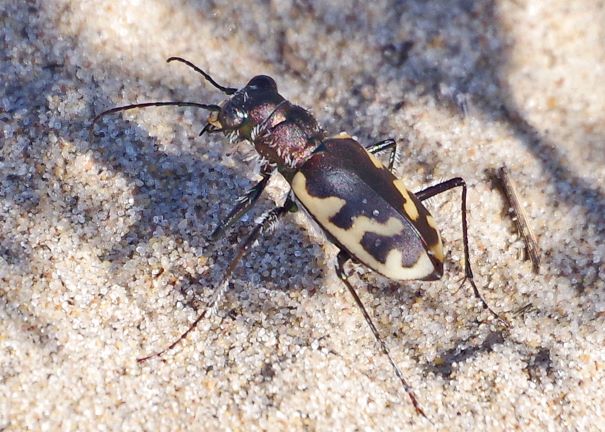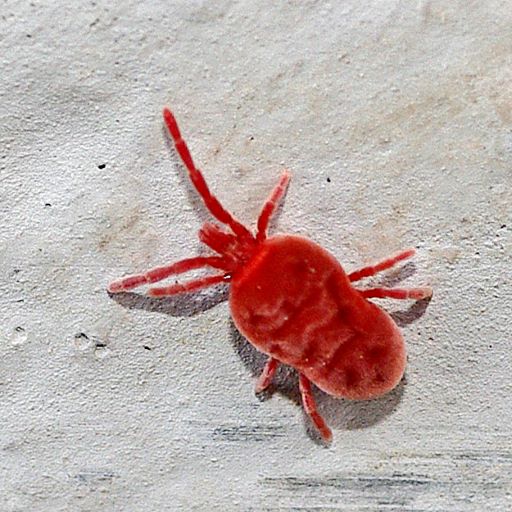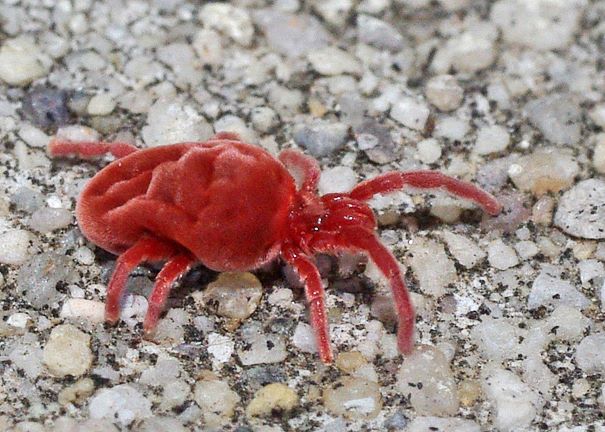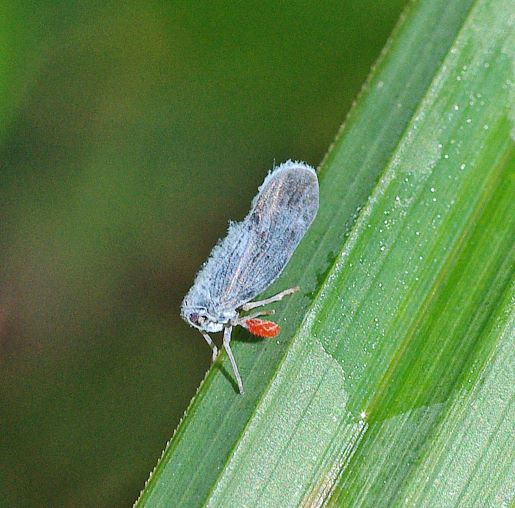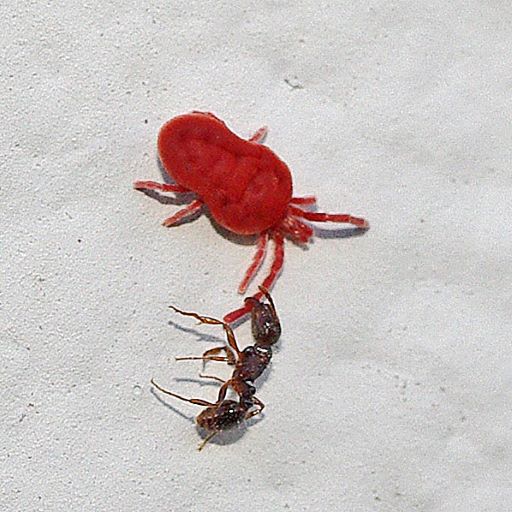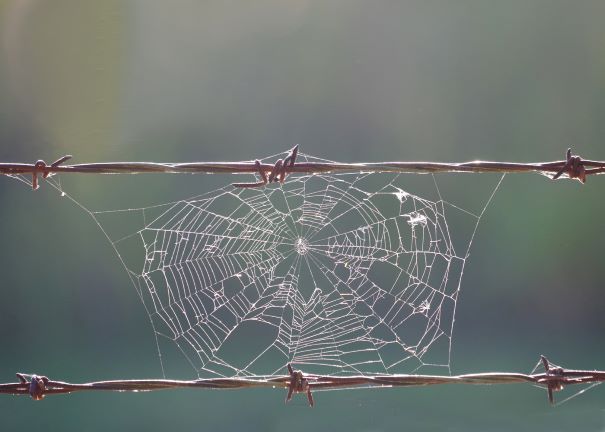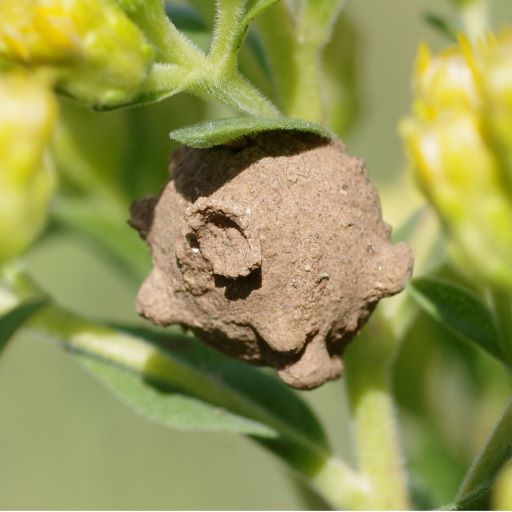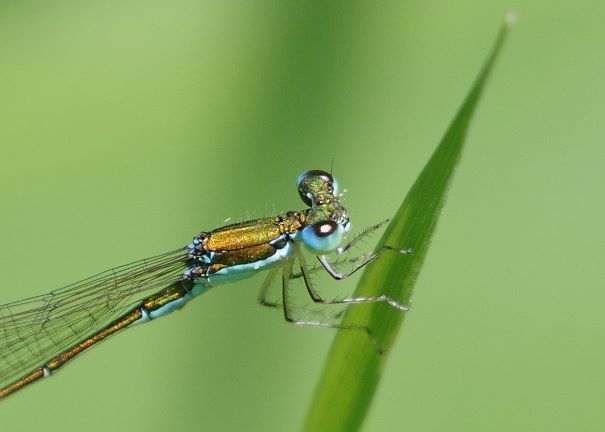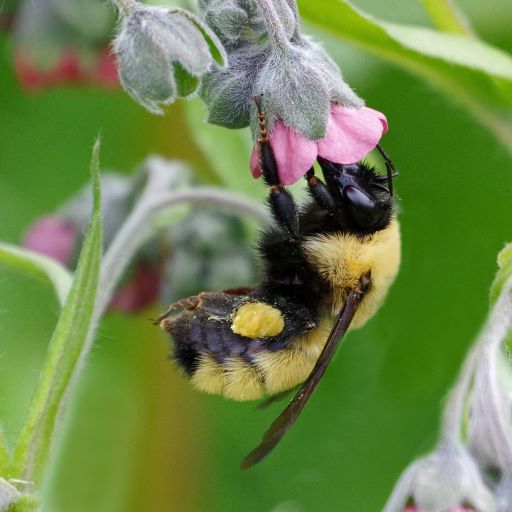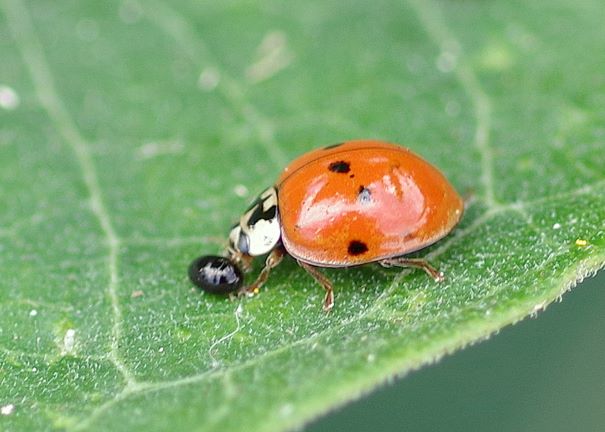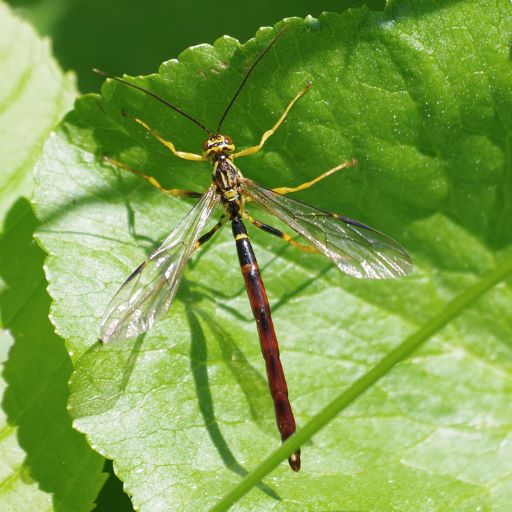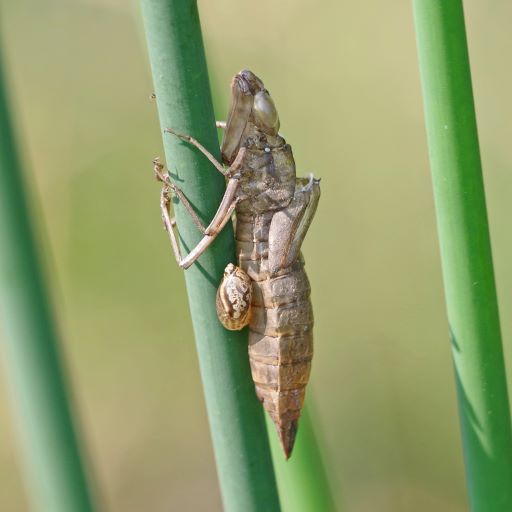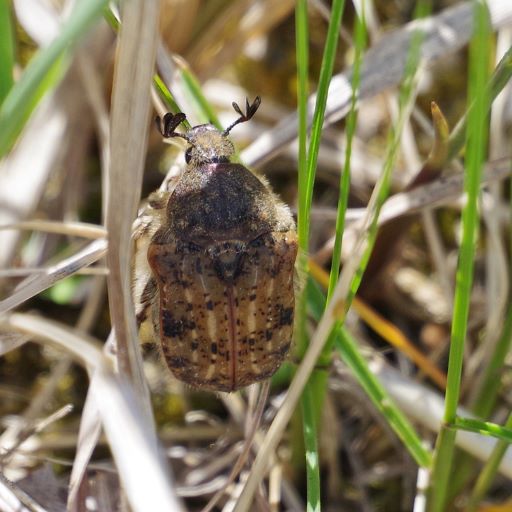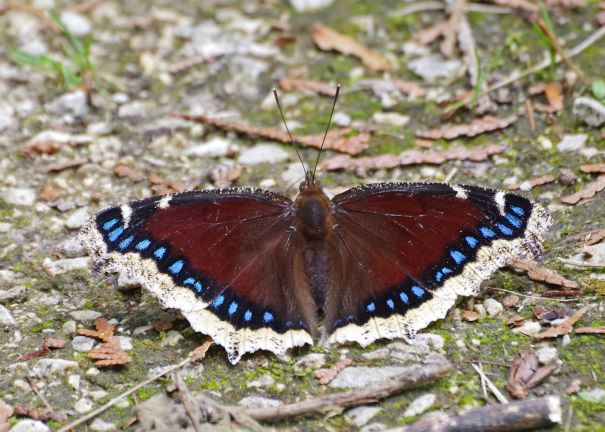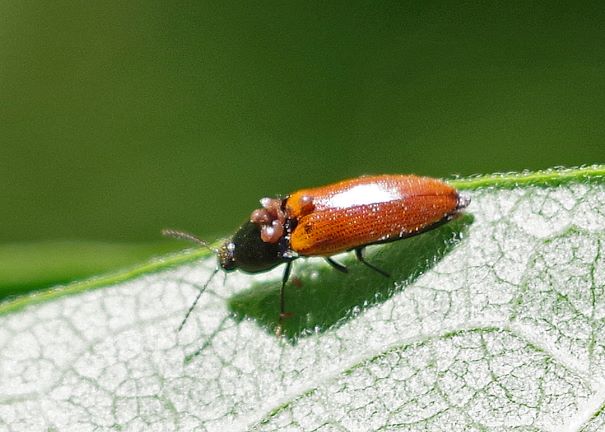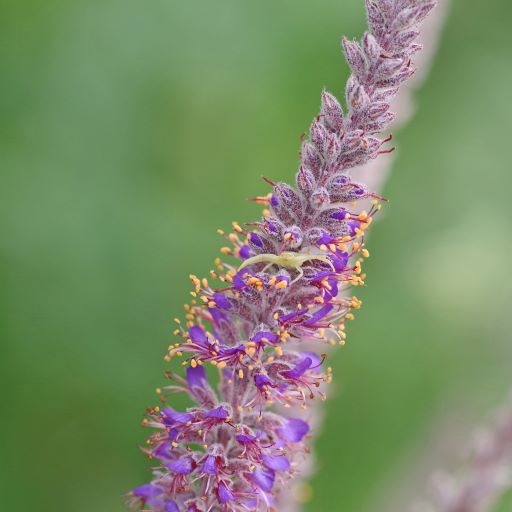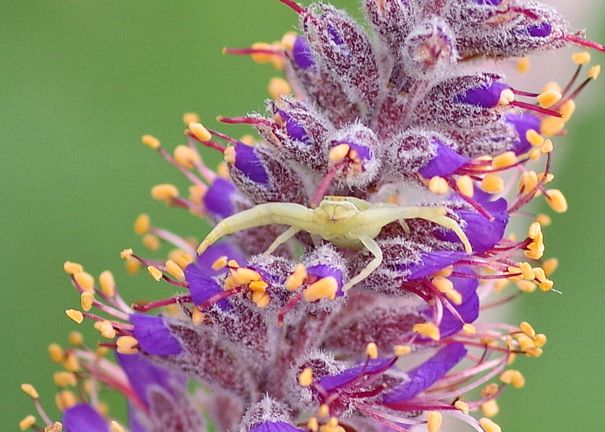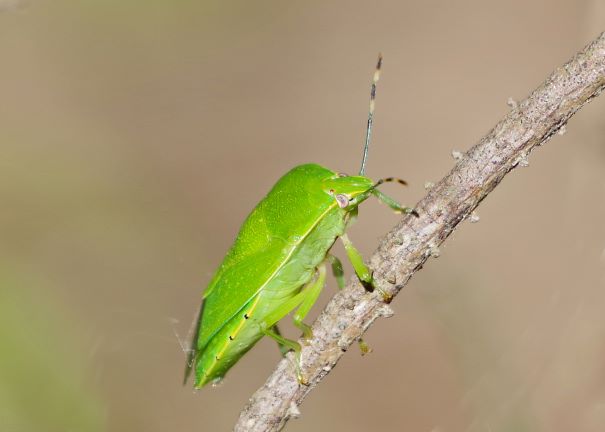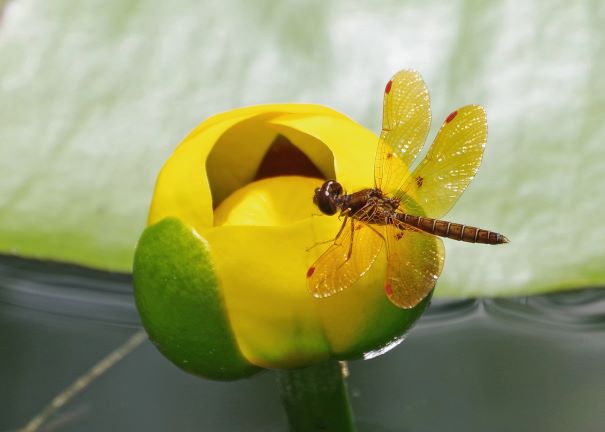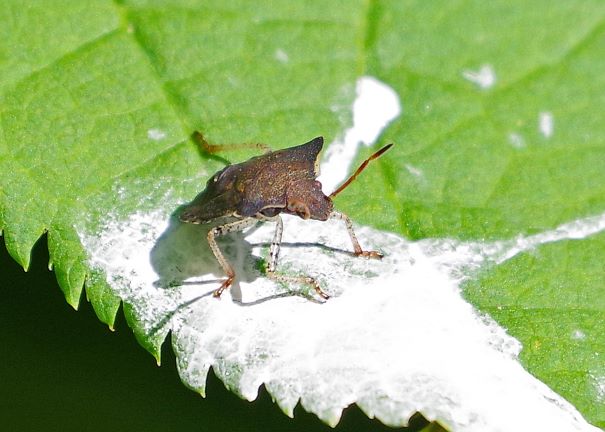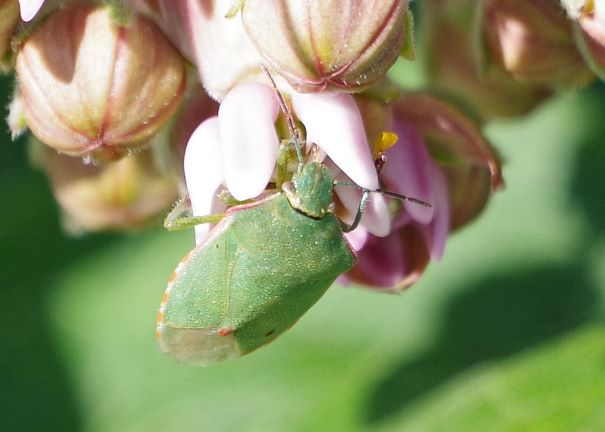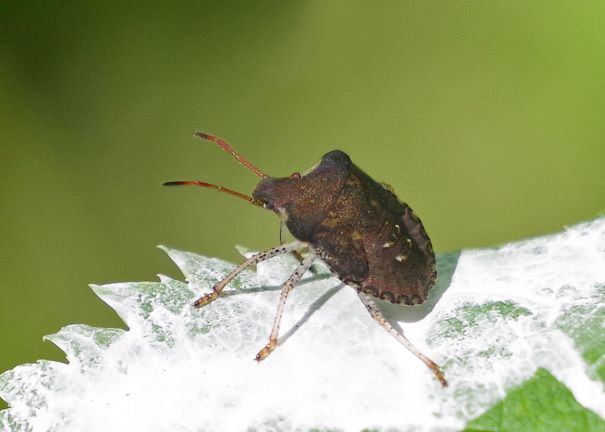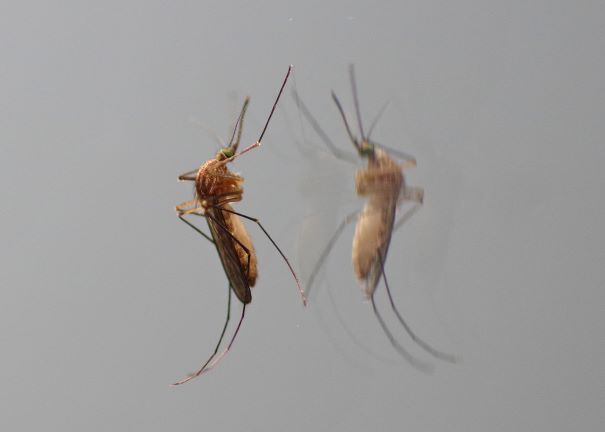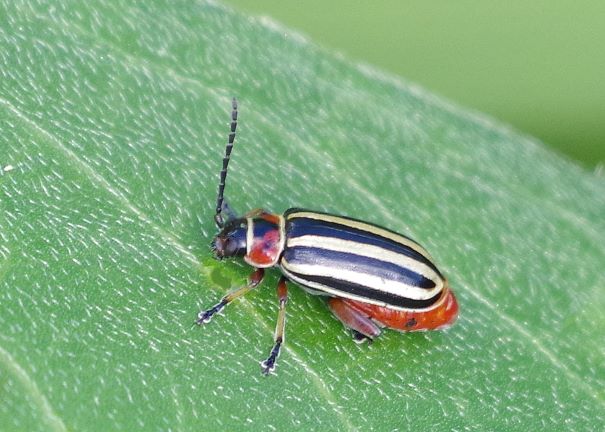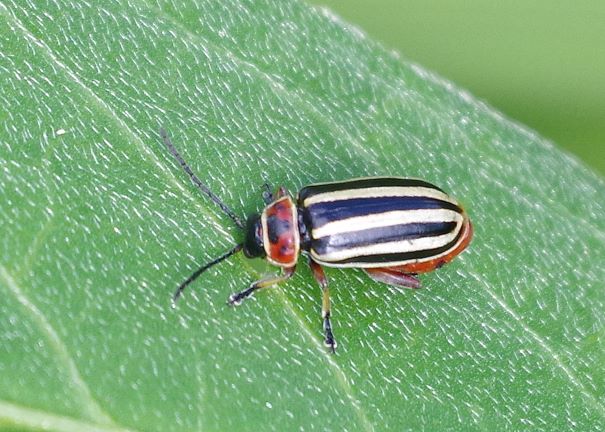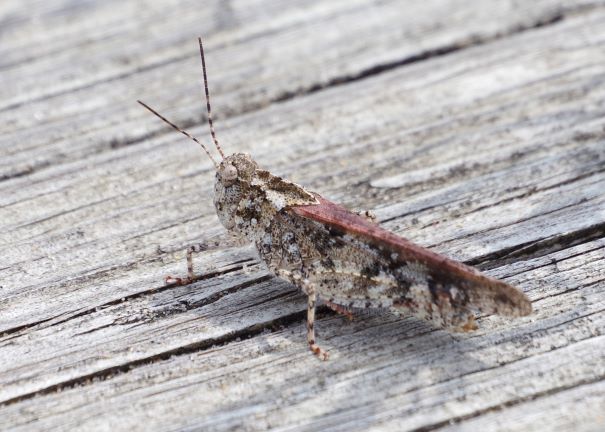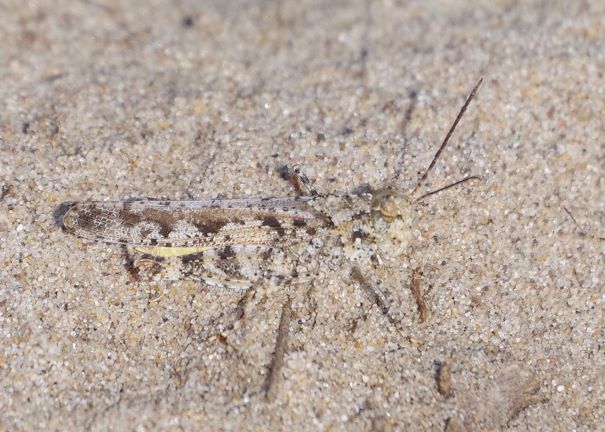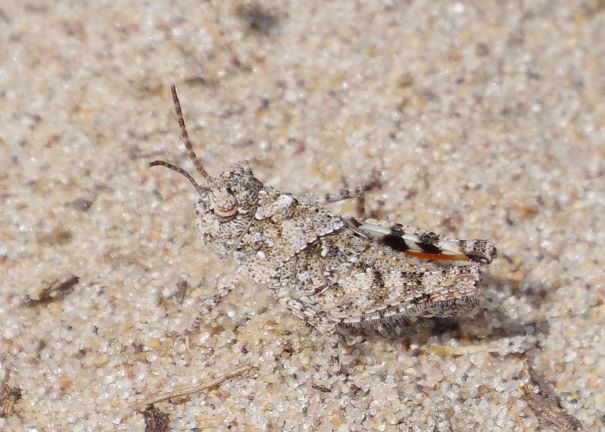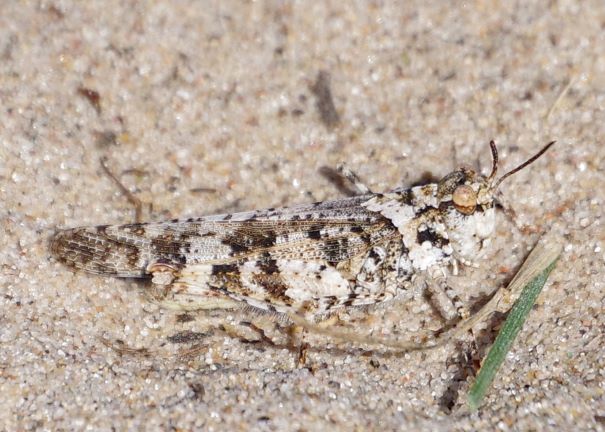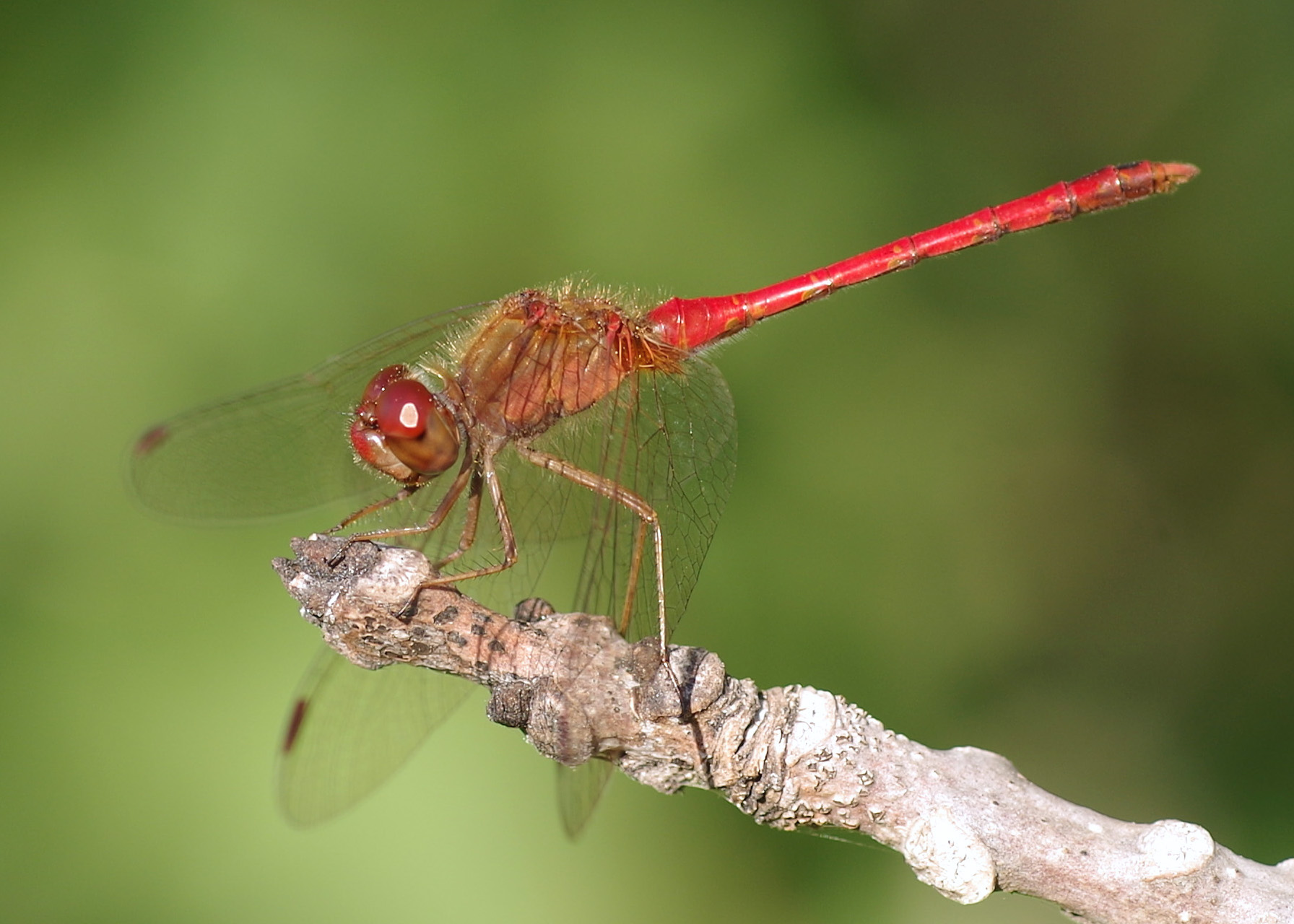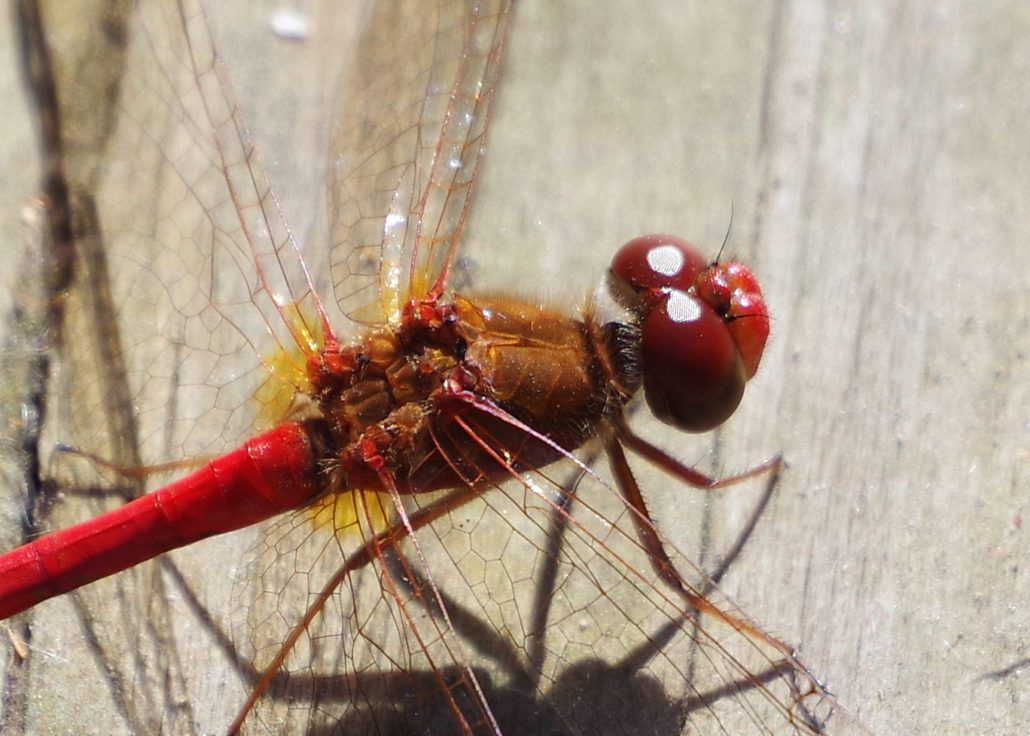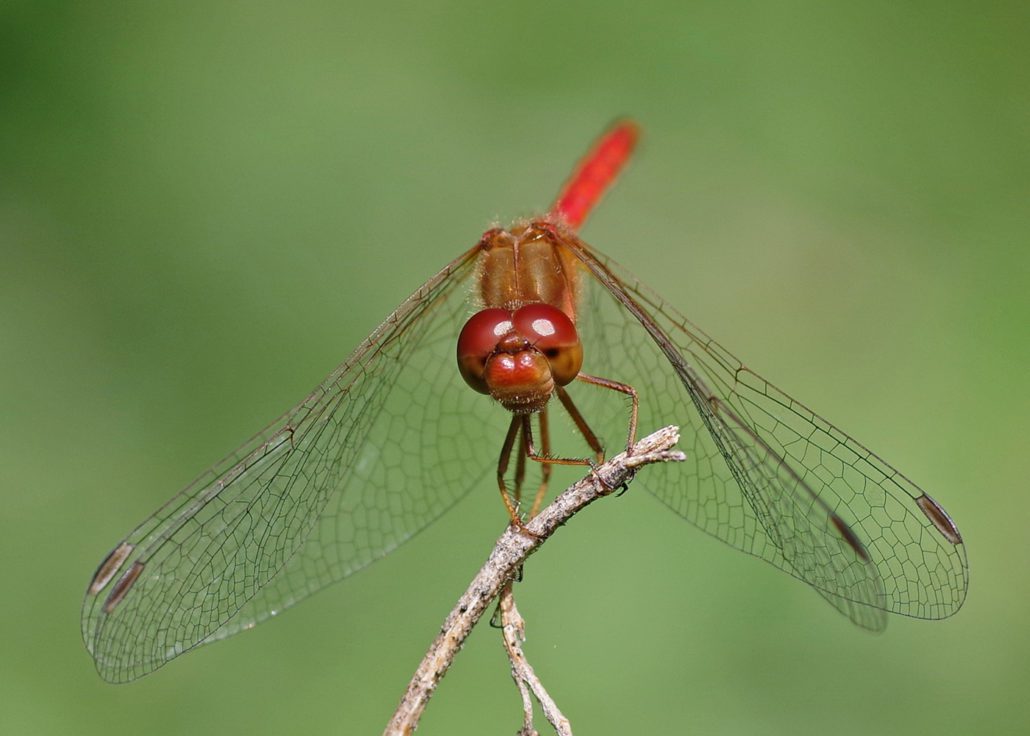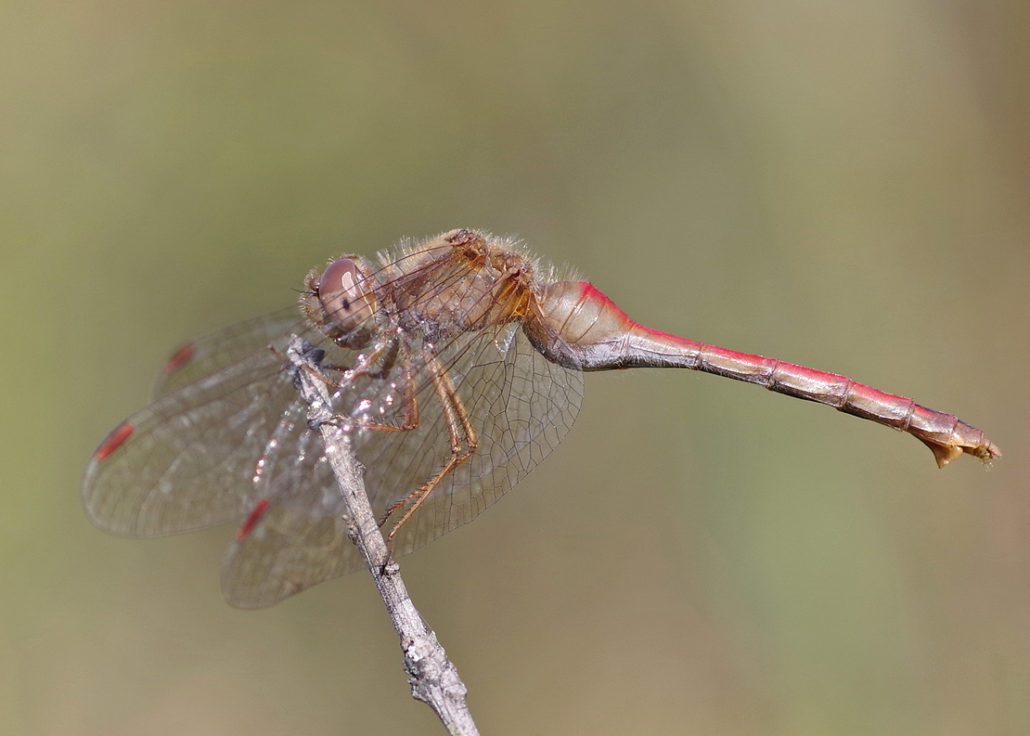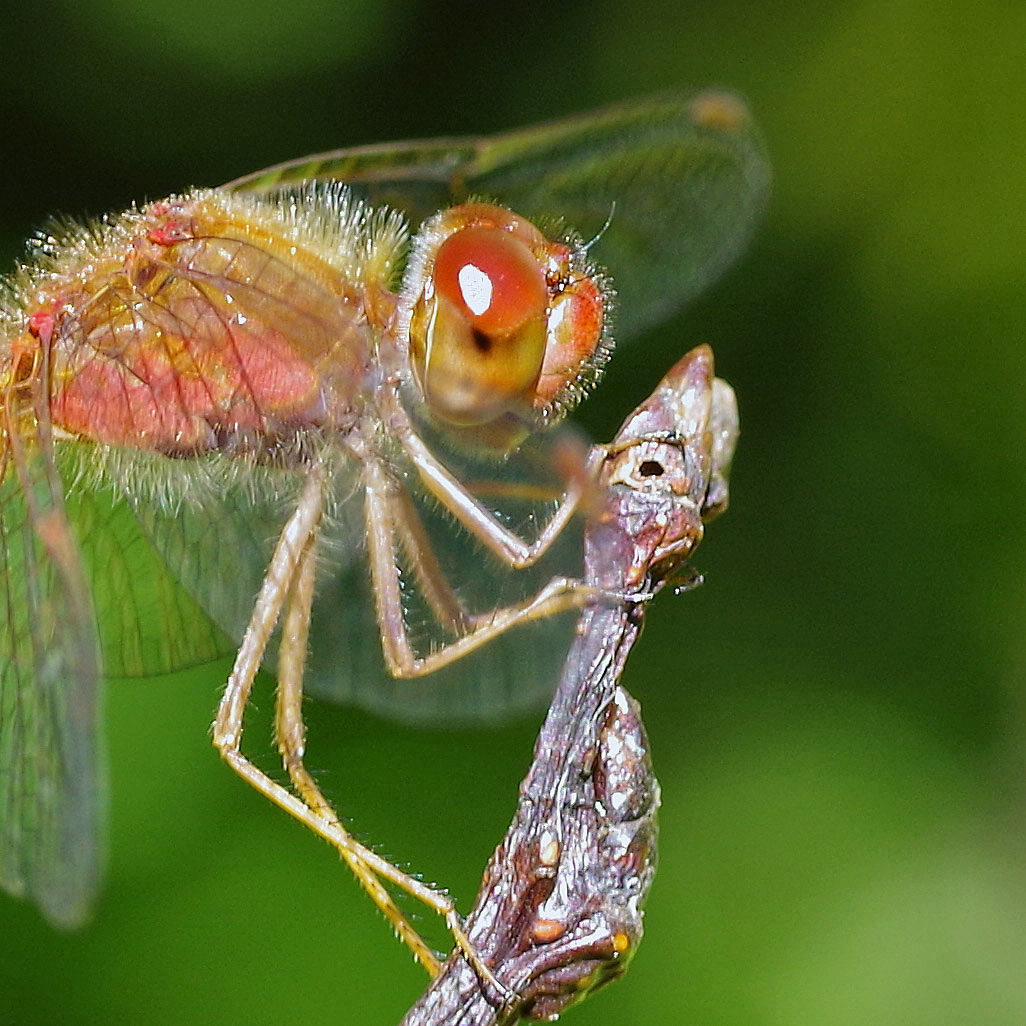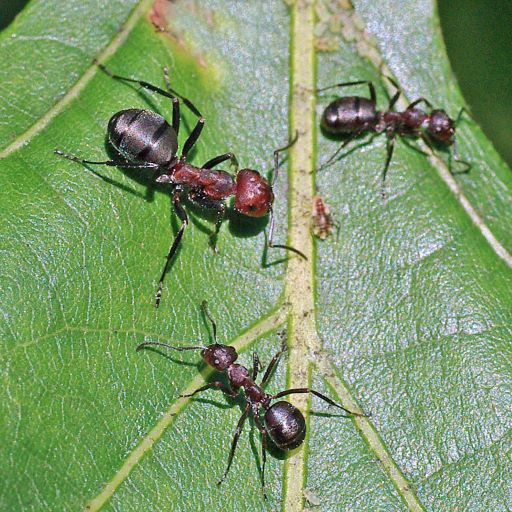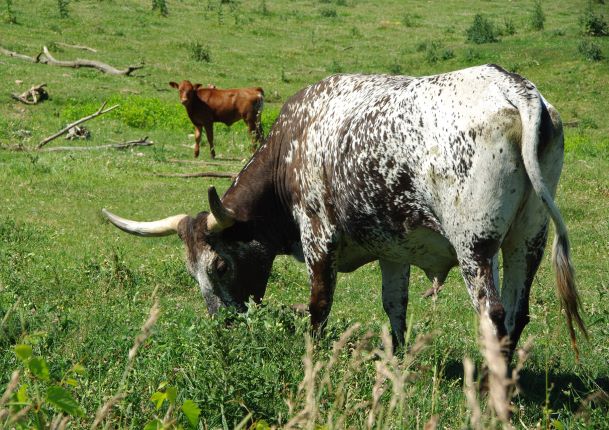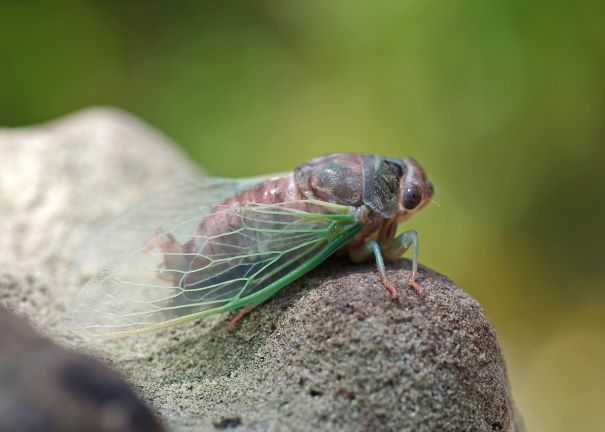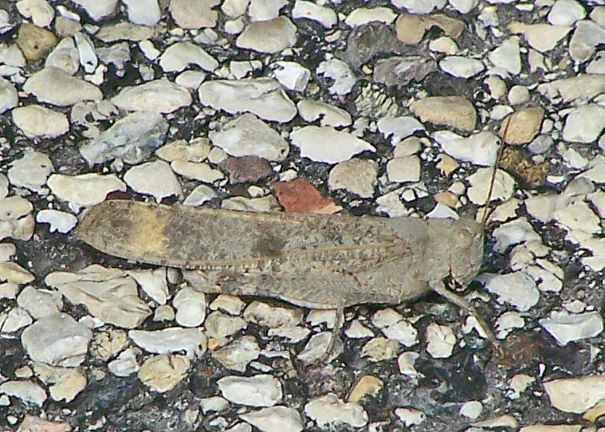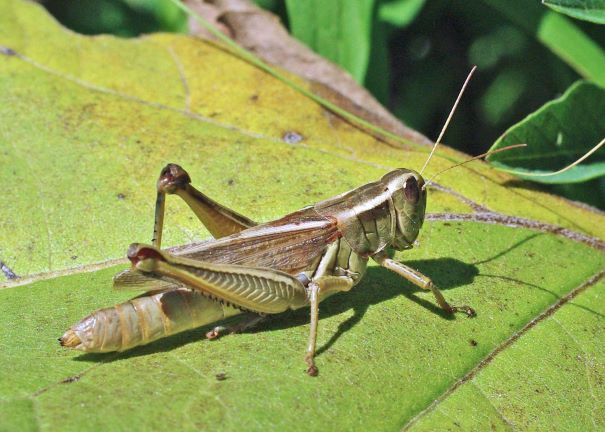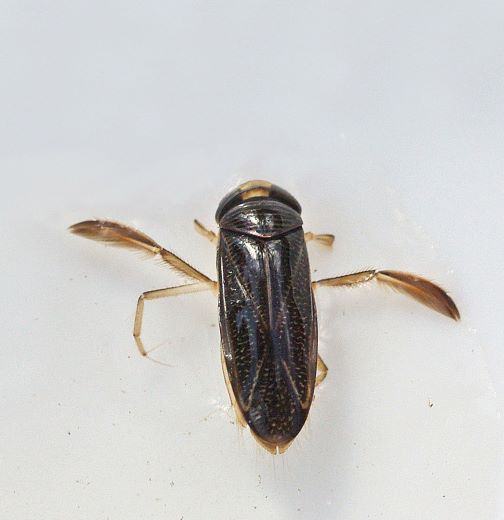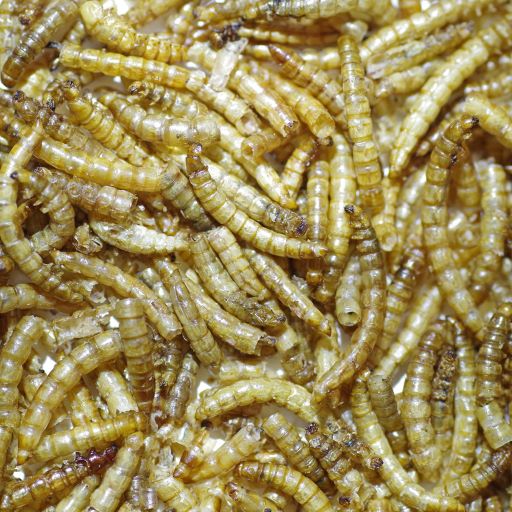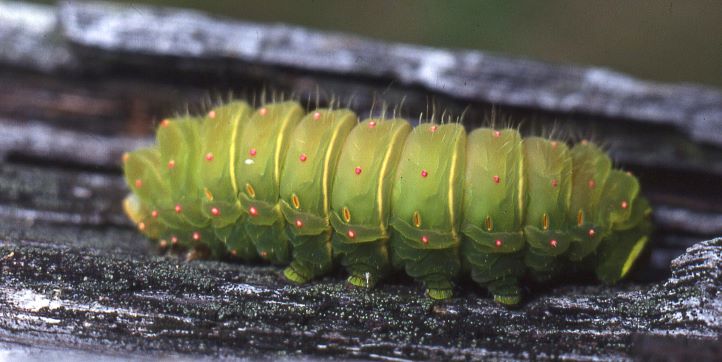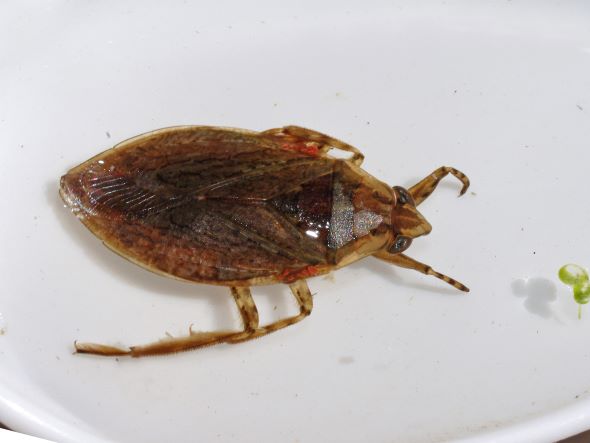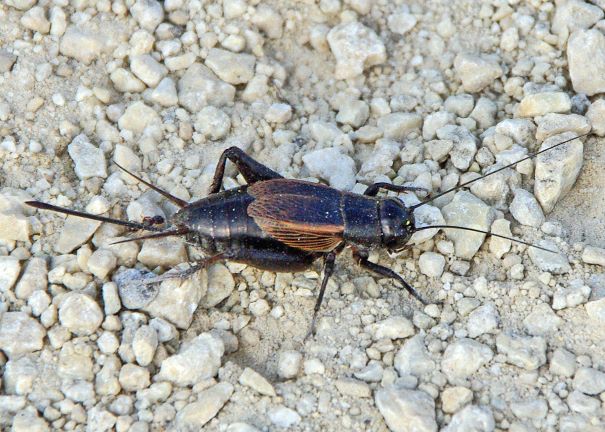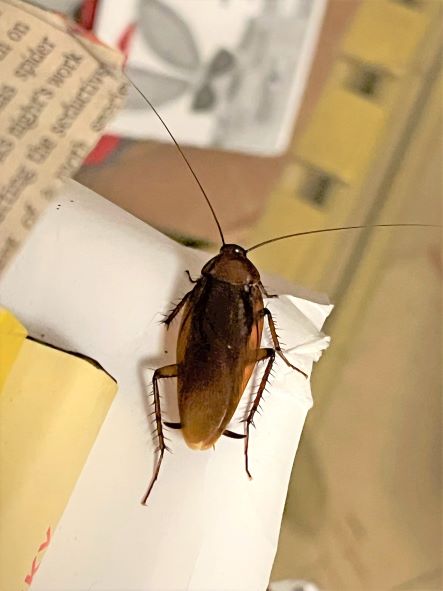
by Kate Redmond
Cockroach 101
Greetings, BugFans,
The BugLady has been wanting to write about cockroaches for a long time (she has fond memories of the “X-Files” episode about them). She asked BugFan Tom if he had any pictures he could share, because she’s rarely seen one (expect when she spent a summer in Coastal Florida, where they call their lunker cockroaches Palmetto bugs), and her attempts at photographing them have failed miserably. He suggested that she has lived a sheltered life, indeed, and his friend, BugFan Joe, subsequently sent this picture. Thanks, Joe. This overview includes info about cockroaches in general and about cockroaches as the Bugs We Love to Hate. Maybe someday there will be a Cockroaches 102, exclusively about native roaches (send pictures!). Meanwhile, BugFan Joe’s picture of a Smokey Brown Cockroach will stand in as Everyroach.
Before we start, here are a few roach-related vocabulary words: “synanthropic” (referring to an undomesticated animal that lives in close association with people and benefits from their activities), “anthropophilic” (preferring human beings to other animals), and katsaridaphobia (cockroach phobia). The collective nouns for cockroach are an “intrusion,” a “swarm,” or a “crunch” of cockroaches.
The BugLady had five assumptions when she started researching cockroaches, and we’ll get to them in a minute.
First of all, who are they? They’re members of the Order Blattodea, the Cockroaches and Termites. The Blattodea are divided into three Superfamilies that are further divided into nine families. Blattodea comes from a Latin word “blatta,” meaning “an insect that shuns the light,” and “cockroach” was Anglicized from the Spanish “cucaracha.” There are about 4,600 cockroach species worldwide, including 70 species in North America; of the global species, fewer than three dozen are affiliated with human dwellings, and of the North American species, that number drops to about four.
These are remarkably adaptable organisms. Many thrive in the tropics, but others can live as far north as the Arctic if they can find shelter and food; their ability to make “antifreeze” lets them survive at below-freezing temperatures. Native cockroaches are generally found in moist woodland habitats like leaf litter, under logs and bark, etc. but some species live in dry areas, others in treetops, and there are aquatic cockroaches that dive for their food. They are mainly nocturnal and are programmed to avoid light. They come from a primitive line – their ancestors (called “roachoids”) appeared some 320 million years ago.
With some notable tropical exceptions, most cockroaches are dark-to-reddish–brown, oval and flat, and about an inch long https://bugguide.net/node/view/300360/bgimage, https://bugguide.net/node/view/157662. Their spiny legs help them locomote on tricky surfaces, they can walk on the undersides of ceilings and tables, and they can squeeze through tiny crevices. They have long, sensory antennae, and although many have wings, few use them. Some species are highly gregarious, recognize their relatives, and have social systems and a group decision-making process. Some species make sound.
As a group, roaches use a variety of reproductive strategies, a story for another time. In some cockroach congregations where males are uncommon, females may reproduce without male input, by parthenogenesis (“virgin birth”).
They are omnivores with chewing mouthparts – they eat lots of carbs and have gut flora that allow them to process cellulose. House-dwelling cockroaches eat starch from book bindings, glue from postage stamps, pet food, bits of exfoliated skin and hair, dead insects, cork, the insoles of shoes, food crumbs, soda and beer (so rinse out those empties), etc. The BugLady saw a note about roaches eating eyelashes as their owners slept, but that was a particularly dense infestation. On a submarine. On the other hand, as one website pointed out, cockroaches are part of the clean-up crew that rids the planet of rotting organic material.
There are a number of wasps whose offspring parasitize cockroaches, and so do horsehair worms https://bugguide.net/node/view/1440973, which grow inside the cockroaches and then order them to a watery grave so that the worm can escape. Native roaches are food for nocturnal reptiles, amphibians, mammals, and birds that are quick enough to catch them (the nymphs of many species protect themselves with gluey defensive chemicals.), and cockroaches are a staple of the pet store trade for keepers of cold-blooded vertebrates and for people who enjoy having them as pets. Broiled, grilled, fried and/or dried cockroaches are consumed in many parts of the world (but not here), and they are raised for medicine in the Far East (Chemicals present in the American cockroach have anti-tumor, anti-bacterial, anti-viral, anti-inflammatory, and analgesic properties.).
Unless you specify the name of a native species when you Google “cockroach,” the internet will serve up one (or all) of the synanthropic Big Four that inhabit buildings in North America – the German cockroach (Blattella germanica), the Brown-banded cockroach (Supella longipalpa), the American cockroach (Periplaneta americana), and the Oriental cockroach(Blatta orientalis). Truth in advertising – the German cockroach originated in southeast China; the Brown-banded possibly came from Africa; the American cockroach is native to Africa and the Middle East but has been here for 500 years and (probably) came over in slave ships; and the Oriental cockroach is, well, Oriental. They have differing requirements for moisture and temperature and so are found in different parts of and different types of buildings. The Wisconsin Pest Control sites say that we have all four of them here, but the range maps at bugguide.net say we have none of them (so maybe the BugLady isn’t the only Wisconsinite who has trouble photographing them).
Wisconsin also has native Pennsylvania Wood Cockroaches that lead blameless lives out under the stars but occasionally come in with a bundle of firewood (or their eggs do). They don’t want to be inside – it’s too dry – and they soon leave or die.
We export cockroaches to other countries, of course, and new species continue to find their way to our shores. We accidentally import green Cuban cockroaches in shipments of bananas (the pretty, green roach whose picture is linked above), Surinam cockroaches in pots of exotic plants (just another reason to plant native species, folks), and Australian cockroaches (and Joe’s Smokey brown cockroach) in pallets made in the southern US.
Here are the BugLady’s five original premises. True or False
1) There’s a ton of information about them on the internet.
SO TRUE. But – 99.9% of the info that’s available seems to come from Exterminators and University Extension sites and is about the Big Four. And not all the info out there is completely accurate – one exterminator’s site proclaimed that there are only four species of cockroach in Wisconsin. You would think that there are no native species – even when you specify “native cockroach,” the internet assumes that you want to hear about the invasives. It’s a classic Catch 22 – unless you Google a native species by its name, it’s unlikely to pop up, but unless Google tells you the names of the native species, you won’t know to Google them (thank goodness for bugguide.net).
2) They’re speedy little devils.
TRUE. Cockroaches can hit speeds of 3 mph, which, said several sources, is equivalent to a human running about 200 mph. They can cover 50 body lengths per second.
3) They’re not a sign of slovenly housekeeping, so stop being so judgy.
FALSE-ish. A little spilled sugar does not a slovenly homemaker make, but to create a less-attractive cockroach habitat, keep the countertops and floors free of crumbs and the garbage and trash spaces clean and secure, and make sure there are no water leaks under the sinks or in the basement or the crawl space. The reason you want to avoid the anthropophilic varieties (besides the panicky exodus of roaches when you walk into a room and flip on the light, or the creepy feeling of being watched – that little movement out of the corner of your eye) is that they stink; they make the surfaces they walk across stink; they stink even more when you squish them (because they store uric acid); you don’t know where those feet have been, but you have suspicions, so you don’t want them dancing on food preparation surfaces; they can carry pathogens from the seamier parts of your home that may cause food poisoning; and their saliva, droppings, and shed skins can trigger allergic and asthmatic reactions (one site suggested that some food allergies may be caused by FDA-allowable amounts of cockroach parts in foods)
4) They live a long time.
TRUE. Some cockroaches live only a year, but others live three or four years.
5) They will survive the Apocalypse
OH! SO! TRUE!
- Some can fast for a month even while remaining active and go without water for two weeks; some can go without breathing for 45 minutes; and the body of a decapitated cockroach can function in default mode for weeks while its separated head will continue to wave its antennae and eat for a few hours.
- During a three or four year life span, they develop an immune system – an immune system that recognizes previously-encountered pathogens and toxins (including pesticides) and defuses them when they are exposed to them again.
- A lethal dose of radiation for a cockroach is much higher than a lethal dose for humans (but it really messes them up), and a fruit fly’s LD is apparently even higher than that!).
- And speaking of radiation, do take the time to read this wonderful account from Dragonfly Woman’s blog about her adventures with cockroaches and a microwave oven https://thedragonflywoman.com/2011/02/28/nuclear_roaches/.
Finally, as tempting as it is to reach for that can of roach spray, please think twice (and then think twice again) about using toxic sprays in enclosed areas and/or where children or people who are confined to bed are living. Do your homework about chemicals.
Kate Redmond, The BugLady
Bug of the Week archives:
http://uwm.edu/field-station/category/bug-of-the-week/

